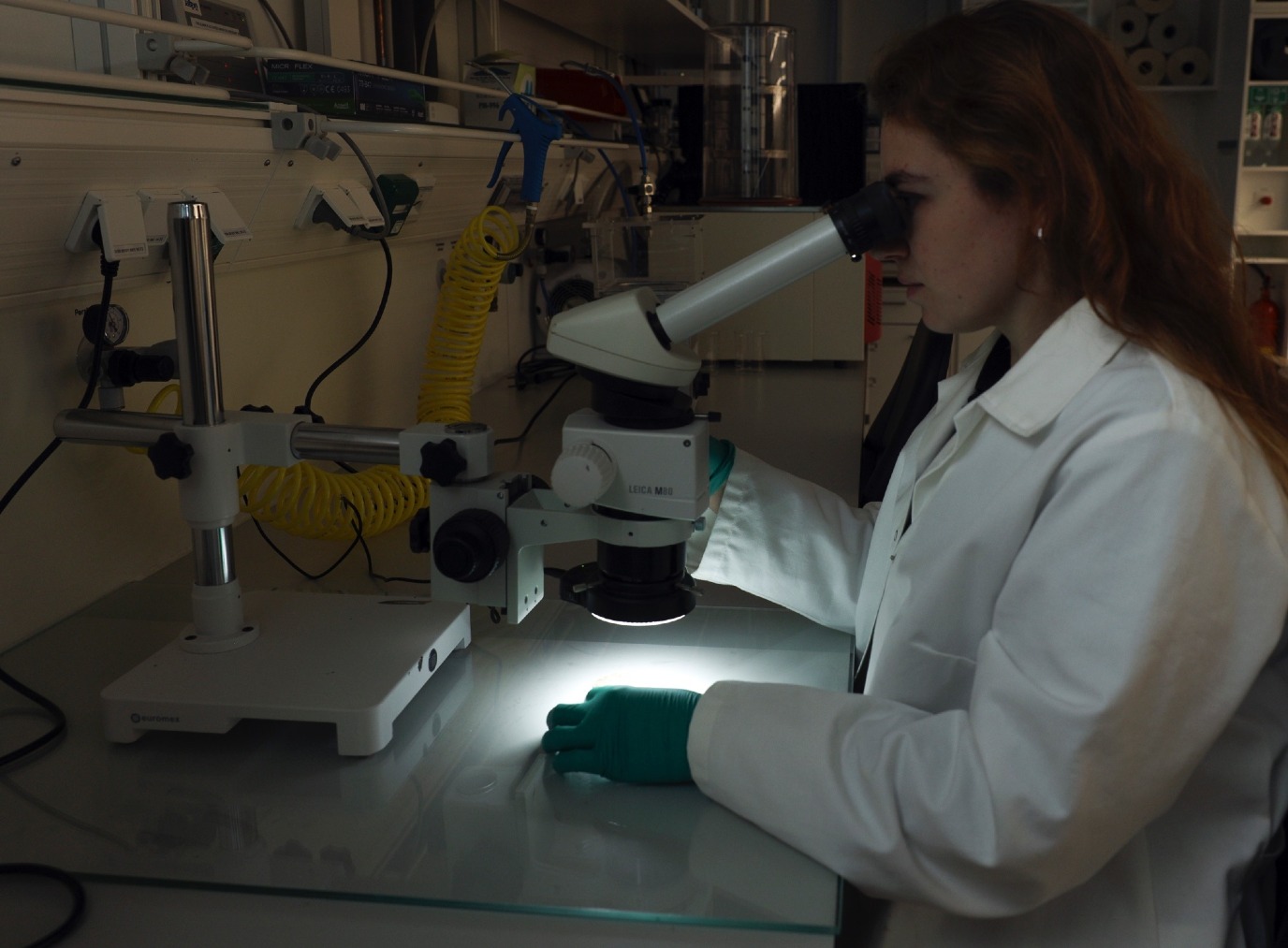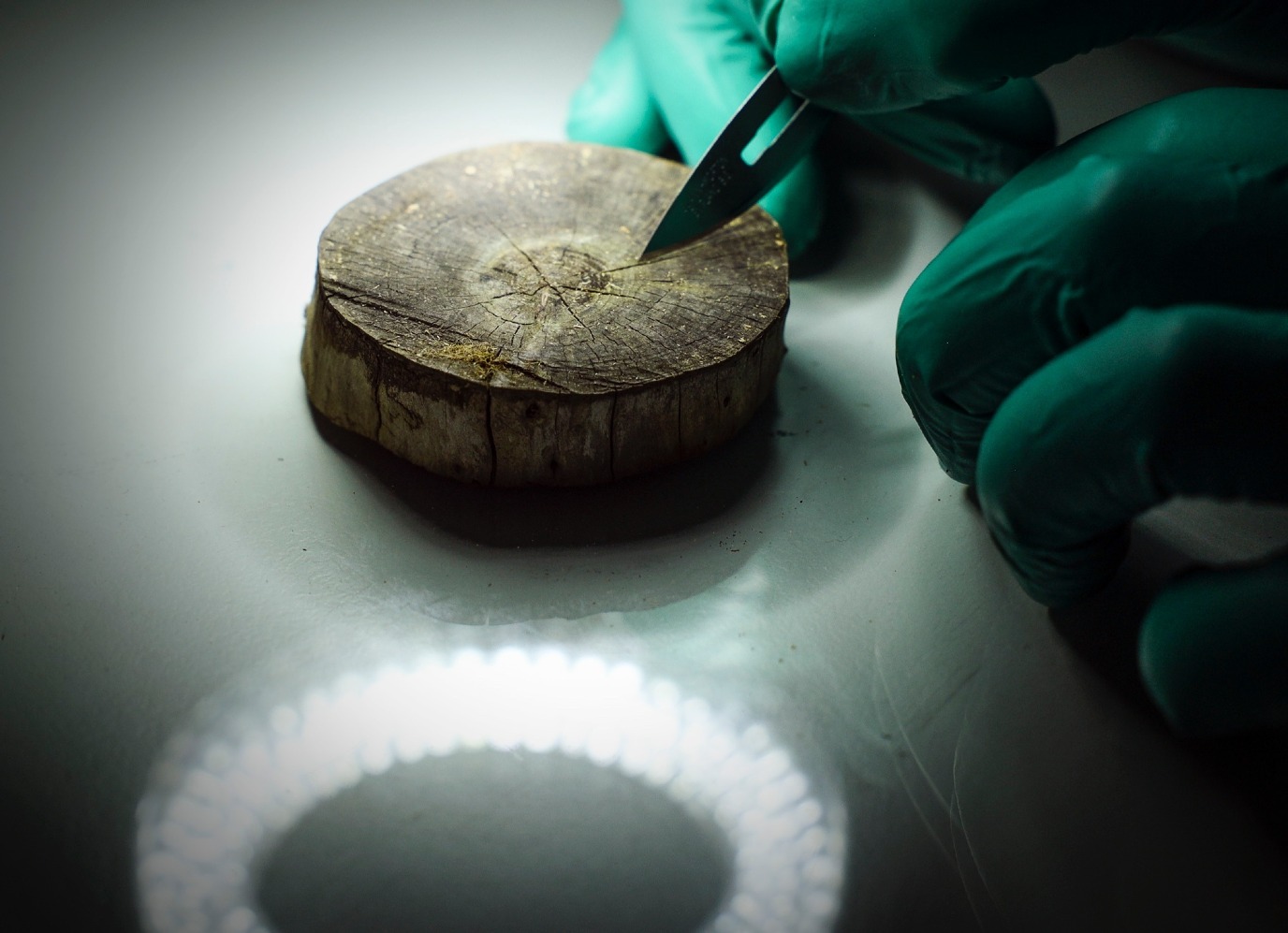Time will tell: what tree rings reveal about the past

In an era where interdisciplinary collaboration is increasingly valued, the field of archaeological sciences stands out, as it seamlessly integrates with other fields such as geology, chemistry, biology, and physics. Isotope analysis of human or animal remains can give insight into past diets, while ancient DNA analysis of bones, teeth, or plants can reveal family connections, population movements, and domestication pathways. Pınar Erdil tells more about it.
Text: Pınar Erdil / Photos: Henk Veenstra
I am Pınar, a PhD student working in the field of archaeological sciences at the Groningen Institute of Archaeology (GIA) and the Centre for Isotope Research (CIO). CIO is the longest-running radiocarbon dating laboratory in the world, and it is well known for high profile publications, such as establishing the date of the first European presence in the Americas, and first detection of industrial hydrogen emissions in the atmosphere. As a chemist and an archaeologist, I specialize in radiocarbon (14C) dating; a method for establishing the age of organic materials. At CIO, we carbon date various archaeological and environmental samples, such as mammoth bones, mummy wrappings, and ancient grains. My research focuses on using carbon dating to refine the chronology of the eastern Mediterranean Bronze Age, with an emphasis on Greece and Egypt.

What is 14C dating?
14C is a naturally occurring radioactive isotope of carbon produced in the upper layers of the atmosphere by cosmic rays from outer space. Plants absorb this isotope during photosynthesis and introduce it to the food chain. While alive, we all carry a certain amount of 14C with us. All living organisms maintain equilibrium with the environment in terms of the 14C they contain. Upon death, it begins to decay at a predictable rate. By measuring the amount of 14C in a sample, we can calculate how long it has been since the organism died. We can convert this value into a calendar date, using a process called calibration. To determine this date, we use the international calibration record, which tracks fluctuations of 14C concentration in the atmosphere over time. The data used for calibration comes from samples of known age, such as tree rings, and needs to be highly reliable to achieve accurate results.

Dating the eruption of Thera
In my research, I apply 14C dating to tree rings to study a defining event in the Bronze Age chronology of the Aegean and the Near East: the volcanic eruption of Thera on the Greek island of Santorini. This was one of the largest eruptions on Earth, spreading a layer of volcanic ash that is now used as a time marker in archaeological research. The precise date, however, remains controversial. Historians, archaeologists, and scientists proposed various dates, with estimates ranging from the mid-17th century BCE to the late 16th century BCE. The disagreement comes from different interpretations of archaeological sources and the 14C evidence. Recently, it was revealed that the calibration record around this time period was not entirely reliable. An offset was discovered around the time of the eruption, suggesting that the 14C date of the event might be different than previously thought. This shocked the community, causing more researchers to investigate 14C data over this period—including me! I investigate this offset around the 16th century BCE by analysing tree rings under a microscope, carefully cutting them with a scalpel, and then measuring their 14C dates individually. Thus far, I collected almost 100 dates! This project is not only about solving a historical puzzle, but it also represents Groningen’s contribution to a global dialogue. These divergences in past 14C levels can only be confirmed if found in different locations, tree species, and by as many laboratories as possible. While my focus is on the Mediterranean, changes to the calibration record could have implications anywhere.

The chronology of ancient Egypt
Another aspect of my research involves working on tree rings from ancient Egypt, a civilization that has left behind mesmerizing tombs, temples, and pyramids, with a history of over 5000 years. Yet, some problems concern the reliability of its chronology. To address these issues, I had the opportunity to collaborate with the Uronarti Regional Archaeological Project team. Uronarti is a fortress in Sudan, built by Senusret III, one of the greatest kings of ancient Egypt. There were remarkably well-preserved wooden beams that were used in its construction, and we were able to separate and measure the 14C date of each tree ring. This method offers higher precision when combined with Bayesian statistics, a technique that uses the age relationship between rings to refine the dating. Because each tree ring is older than the next, this relationship helps create a ‘time fingerprint’ that can be matched to the annual calibration record. The last ring of a sequence gives the approximate date the tree was felled and, by extension, when the fortress was constructed. Unfortunately, our initial findings proved somewhat underwhelming. It fell short of the precision we hoped for and still left some uncertainty about the exact age of Senusret III’s reign. However, after consulting other experts in our field and obtaining more samples from Uronarti, we produced exciting new results, which I plan to publish soon. Overall, my PhD journey has taught me that collaboration is the key to progress in all forms of academic research!
More information
More news
-
27 November 2025
Aeroplane spotting using a radio telescope
-
26 November 2025
Why are shiny colours rare yet widespread in nature?
